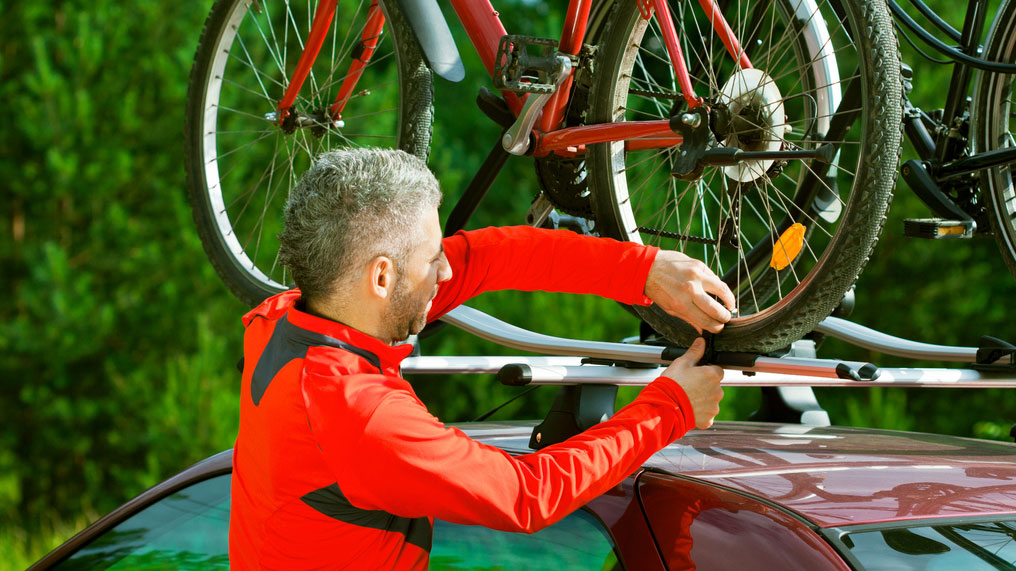Whether it’s for a leisurely family ride by the seaside or a sweaty Sunday sprint, getting your bike from A to B often calls for more than just pedal power.
That’s where your car comes in. The safest and easiest way to get your bike to the start of the race or home after a day in the countryside is to secure it to a bike rack.
Which bike rack is right for you?
Choosing the correct bike rack depends on many factors. We asked Pearson Cycles in Sutton – officially recognised by Guinness World Records as the world’s oldest bike shop – to offer advice on the three main types available. Here's what they told us...
Tips for fitting bike racks
The first thing you should consider is whether a bike carrier fits your vehicle, say Pearson Cycles: "It’s tempting to save a few quid by buying online, but for peace of mind, safety and avoiding the hassle of returning a bulky box, you should head to a knowledgeable local bike shop and seek advice from someone with a good level of experience.”
Strap-mounted bike racks
“These are usually best-suited to carrying up to three bikes,” say Pearson Cycles. More than that and the bikes can apply too much load to the car and cause damage. With a strap-mounted bike carrier, there’s no need to buy extra fixtures and fittings to attach it to your car, as everything you need will be included with the product.
It's important to choose a rack that fits the body shape of your car correctly. Pearson Cycles told us that “with strap-mounted racks and tow bar racks, it's especially important that you leave clear separation between the bikes, so they don’t damage each other. If there’s movement at speed, at best, your paintwork will be damaged, at worst, carbon-fibre frames can be broken.”
Pros
- Low impact on fuel consumption
- Easy to fit and load
- Versatile
Cons
- Block access to the boot and parking sensors
- Likely to mark the paintwork
- You'll need to check strap tension during longer journeys
Roof-mounted bike carriers
When the bike count rises to four, or if you want access to the boot, a roof-mounted rack could be a good choice.
“Some car manufacturers offer bespoke bike carriers if the car doesn’t have roof rails,” say Pearson Cycles. With contoured roof rails, there aren't many compatible racks, but traditional raised roof bars offer plenty of choice.
You’ll need to buy a pair of bars that run across the car’s roof rails, that the bike rack attaches to. So, remember to add this to the cost.
And talking of cost, it's worth noting that your car’s fuel consumption will be increased by a roof rack, too. With petrol costs at an all-time high, it's an important consideration to take into account.
“Stability of the bikes on the rack is important, as they are very exposed in the air at high speed,” stresses Pearson Cycles. Plus, “drivers will have to accept that on a long trip in the summer, their bike will end up covered in dead bugs!”
Some simple roof racks lock the bikes’ front forks to the rack, which means the front wheel must be removed and stored in the boot, taking up luggage space. Others have bracing bars for the bikes’ frames. Check which one works best for your car and the space you need.
Pros
- Unhindered access to the car’s boot
- Doesn't block parking sensors
- No load on vulnerable body panels
Cons
- Hard work to load
- Bikes get dirty
- Can be unsuitable for areas with height restrictions
Tow bar-mounted bike racks
Any car fitted with a tow bar can use a tow bar-mounted bike rack. These can hold as many as four bikes, which makes them popular with families. Good versions now come with integrated brake and indicator lights and an area to attach a spare number plate. They’re also easy to fit and load, plus fuel consumption doesn’t suffer greatly.
But there’s a price to pay for this convenience, which is the price itself. Also remember that even the best bike racks – which hinge the bikes towards the ground so the tailgate can be opened - impede access to the boot.
“Fitting should be universal with these,” says Pearson Cycles. “But as with strap-mounted bike racks, you need to be sure that the bikes don’t rub against each other when in transit.” You should also remember that your reversing aids won’t work, and check that the rack is tight and secure during a long journey.
Pros
- The easiest bike rack to fit and load
- There’s little risk of damage to the bodywork
- Doesn’t significantly impact fuel economy
Cons
- Can be expensive
- Block access to the boot
- Block parking sensors
Before you take your bike on the road...
Remember to check your insurance to find out whether your bike’s covered while it’s away from home. Some home insurance will include bike cover away from home, others won't, so it's worth making sure before you set off.
You might want to think about specialist cycling insurance, which could cover your bike and accessories for damage or theft while you’re out and about.
You could even get public liability and personal injury cover in case someone makes a claim against you for damage caused while you’re out on your bike, or to help with medical expenses if you have a crash.




